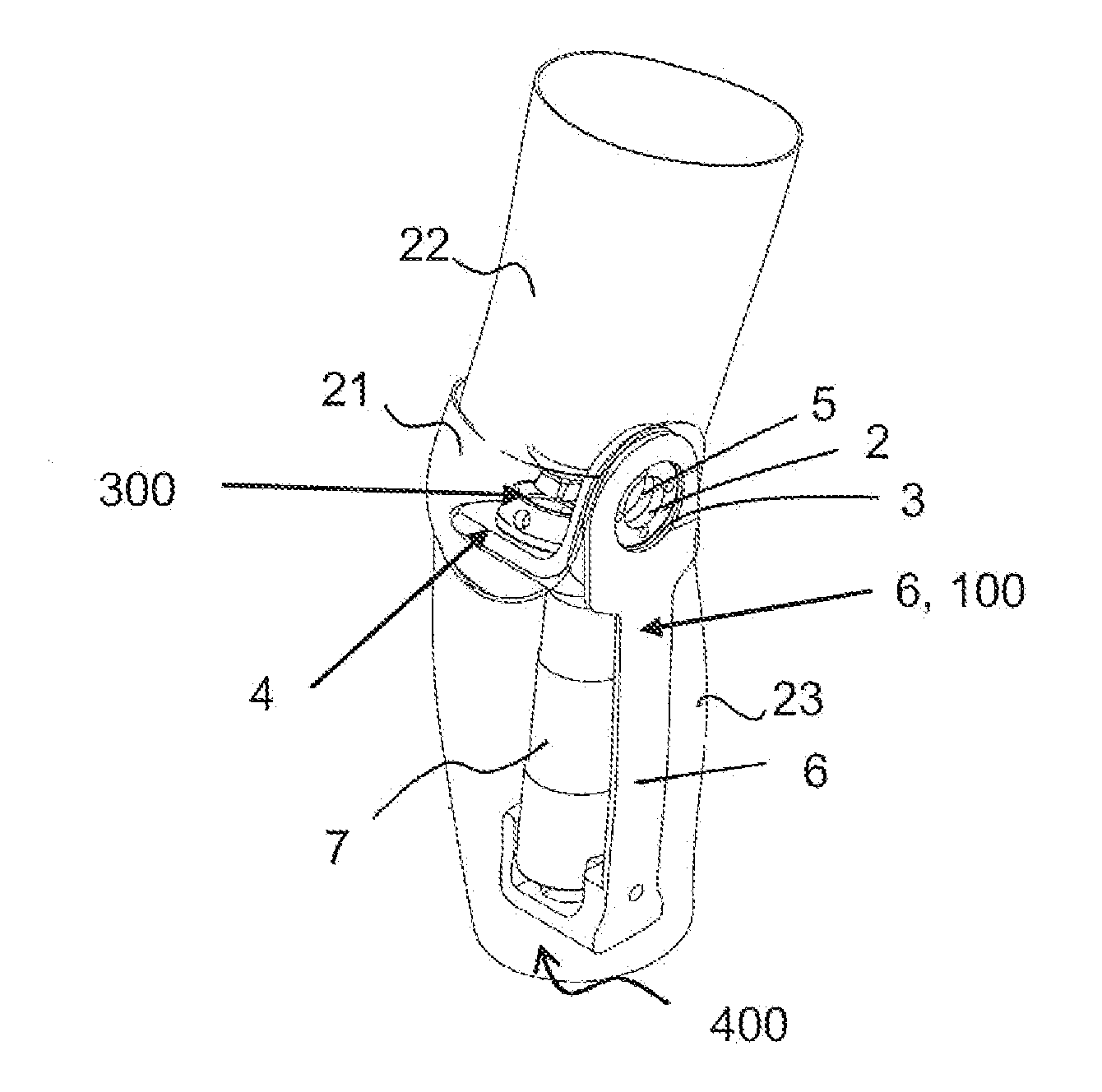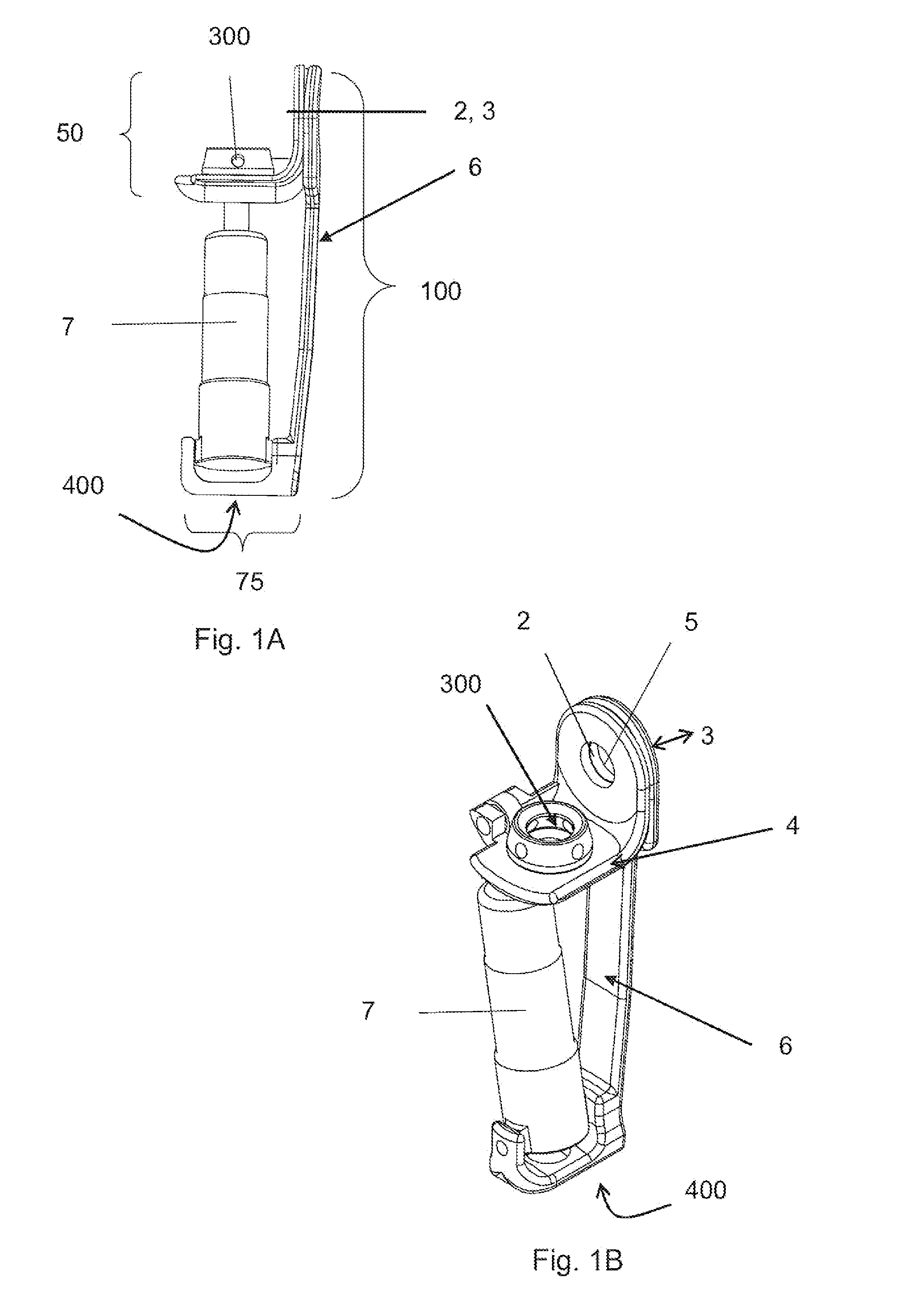Knee joint prosthesis
- Summary
- Abstract
- Description
- Claims
- Application Information
AI Technical Summary
Benefits of technology
Problems solved by technology
Method used
Image
Examples
first embodiment
[0053]the actuator 7 is shown in FIG. 3b and is an actuator comprising a shaft 8 that moves in the axial direction of the shaft 8 and a housing 9. The housing 9 protects the electric motor 10. The electric motor 10 turns a nut 11 and the shaft 8 moves in the axial direction, and then changes the angular velocity of the artificial knee joint. A thread 12 on the shaft 8 has a high pitch. If the shaft 8 drives back and forth, the shaft 8 will rotate the nut 11. If the nut 11 is rotating without help of the motor, for instance when a user moves the leg without help from the power source, it will spin the electric motor that will produce electric energy when the shaft 8 is moved. In embodiments incorporating a chargeable power source, this electric energy can be used to charge the power source.
second embodiment
[0054]FIG. 3c shows a sectional view of the actuator 7 comprising a linear motor 17. The actuator 7 can also for example comprise an axle 16 that is included in the linear motor 17, which is made up of solenoids 18 and magnets 19 that move the axle in a linear direction, and if the axle is moved linearly it induces electric energy in the linear motor 17.
third embodiment
[0055]FIG. 3d shows the actuator 7 comprising an electric motor that rotates a ball screw nut 13 and moves a ball screw shaft 8 linearly, or the ball screw is moved linearly and the motor generates energy. The nut can also for example be a ball nut to reduce friction between a thread 14 and a nut. The coupling between the nut and the motor can also for example be a free needle hub bearing coupling 15. However, the invention is not limited to a certain type of drive motor, for example a belt motor drive or a hollow shaft motor may also be used.
[0056]FIG. 4 shows a flow chart describing the operation of the knee joint of the present invention using an electric control system. The microprocessor measures all sensors at least at 1 kHz and decides if the knee shall flex or extend as well as how fast the motions should be. The microprocessor then controls the motor in the actuator to work as a motor consuming energy or generating energy depending on the angular velocity of the prosthetic ...
PUM
 Login to View More
Login to View More Abstract
Description
Claims
Application Information
 Login to View More
Login to View More - R&D
- Intellectual Property
- Life Sciences
- Materials
- Tech Scout
- Unparalleled Data Quality
- Higher Quality Content
- 60% Fewer Hallucinations
Browse by: Latest US Patents, China's latest patents, Technical Efficacy Thesaurus, Application Domain, Technology Topic, Popular Technical Reports.
© 2025 PatSnap. All rights reserved.Legal|Privacy policy|Modern Slavery Act Transparency Statement|Sitemap|About US| Contact US: help@patsnap.com



